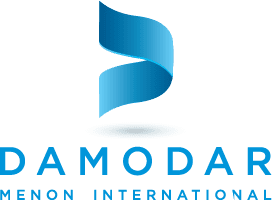Today, we will explore the two most dominant fibers in the textile industry: cotton and polyester. While you know the basics—cotton is a natural fiber, and polyester is a synthetic fiber—there’s more to them than meets the eye. In today’s blog episode, we will discuss what knitted fabric manufacturers look into when choosing between polyester and cotton fibers.
What is Cotton?
Cotton is a plant fiber cultivated from the Genus Gossypium plant family. This fiber is primarily composed of cellulose, a soft and fleecy insoluble organic compound that provides essential structure to the plant.
Cotton is called the king of fibers. It is the most important natural and cellulosic textile fiber in the world. It is native to tropical and subtropical regions, including India, Africa, China, Pakistan, and America. In textiles, cotton fibers are the dried cell walls. The fiber is spun into yarn to produce soft, high-quality textile fabrics.
The fiber can hold water 25 times more than its body weight.
The USA remains the world's leading cotton producer, followed by China and India. The South Plain region in northern Texas is the world's largest cotton-growing area.
How is Cotton Processed?
Producing cotton fiber is a complex process involving several stages. Originally, cotton was picked and separated by hand, but now machines like cotton pickers and strippers handle these tasks.
The harvested cotton is sent to gins for cleaning and separating from dirt, lint, and seeds. The cleaned cotton is then shipped to textile mills, where the fibers are compressed into large bales for easier handling. Then, at the mills, carding machines transform it into long, untwisted ropes. Different types of cotton fibers are blended to achieve different rope qualities.
These ropes are then sent to woven or knitted fabric manufacturers for fabric formation. The fabric undergoes various pre-treatments, such as dyeing, coloring, or bleaching, for final use.
It is then further processed by adding special coatings and finishing touches.
What is Polyester?
Polyester, short for Polyethylene Terephthalate (PET), is the world’s most popular textile fabric for thousands of industrial and consumer applications. While some forms of polyester are biodegradable, most of them are not.
Polyester gained popularity in 1940 when it was advertised as “a miracle fiber.” However, it was developed much before the 1920s, first synthesized by W.H. Carothers in the UK. Polyester was known as Terylene back then. However, America’s DuPont Corporation showed interest in the product and developed the first polyester fiber for mass consumption during World War II.
How is Polyester Processed?
The production process of polyester varies depending on the type being made. Ethylene polyester, the most commonly produced polyester fiber, is derived from ethylene, a petroleum by-product, though ethylene can also come from other sources. This polymer interacts with various chemicals to create PET fiber, a stable fibrous compound. Other types include plant- based polyester and PCDT polyester.
Ethylene glycol reacts with dimethyl terephthalate at extremely high temperatures. The resulting monomer is then reheated with dimethyl terephthalate to create the desired polymer. This polymer is extruded into long strips, which are then cooled, dried, and broken into small pieces. Polyester yarn manufacturers in India further melt these pieces or chips to create a honey-like substance that is passed through a spinneret to form long strands of fibers.
PET fiber can be produced in four ways:
1 Filament: Continuous fibers are known for producing soft and lustrous fabrics.
2 Staple: Resembles cotton staple yarn and is spun into a yarn-like material.
3 Tow: Similar to filaments but with fibers loosely arranged.
4 Fiberfill: Filaments produced exclusively for bulky textile consumer goods like sportswear, pillows, and stuffing for stuffed toys.
Cotton vs Polyester
Cotton is lightweight, breathable, and absorbs moisture, offering higher comfort for the wearer. Polyester is denser and heavier than cotton but offers moisture-wicking and quick- drying properties, making it a perfect fabric for summers and sportswear.
Cotton is natural and skin-friendly, while polyester could be allergenic for sensitive skin.
Cotton is less durable and causes shrinkage. The color and print on cotton fabrics can also fade away with time. In contrast, polyester is durable and stable, does not require ironing, is ideal for hard-wearing, and is longer-lasting than cotton. When it comes to environmentally- friendliness, cotton surpasses polyester since it is a natural fiber.
Polyester yarn manufacturers in India often blend cotton to produce fabrics that are far better in quality, durability, and texture and to improve the natural fiber’s durability, shrinkage, and wrinkling properties.
At DMI, you can also find eco-friendly polyester yarn suppliers. The fabrics are made from 100% recycled polyester yarn. Contact our trading expert for more details. If you are searching for online buying and selling Textile fabric, TEXchange Global serves as the cornerstone for exports and imports, providing a platform for textile companies in India to connect and trade across international markets.
